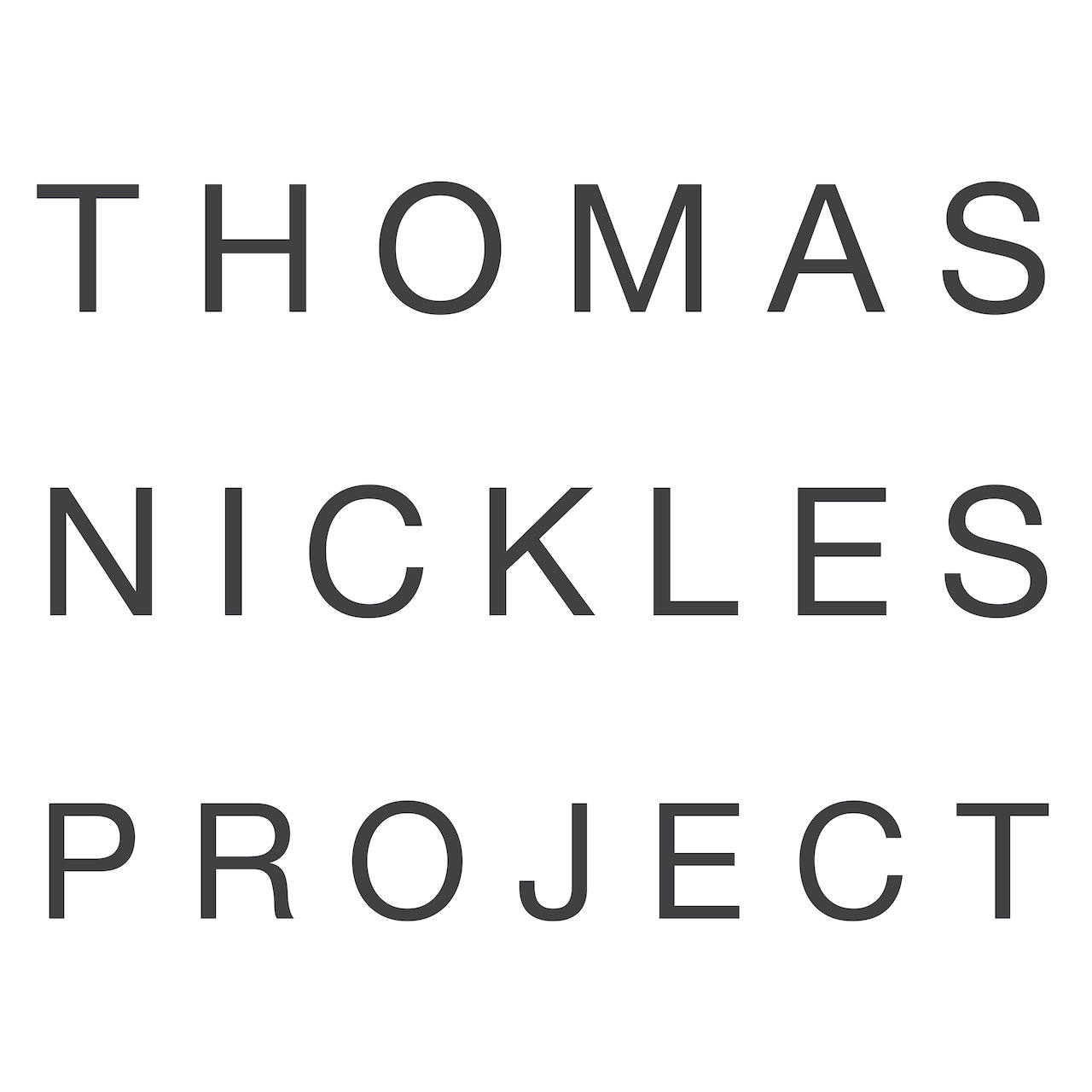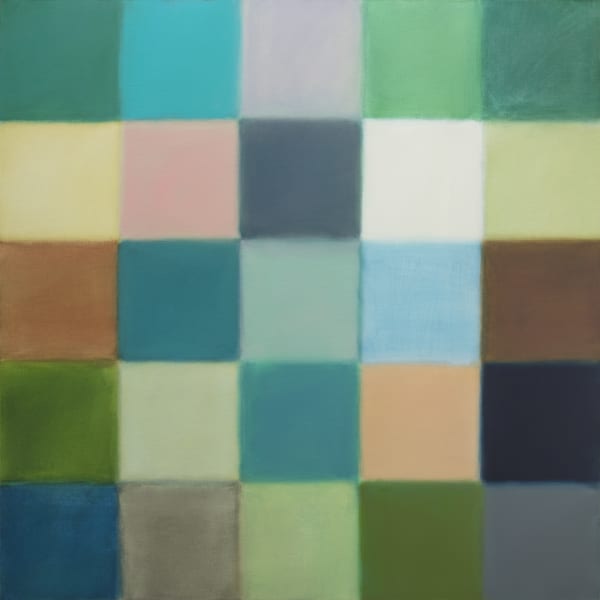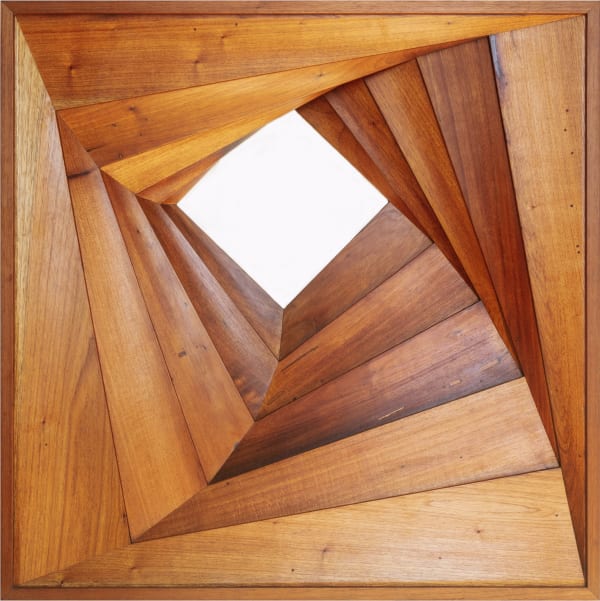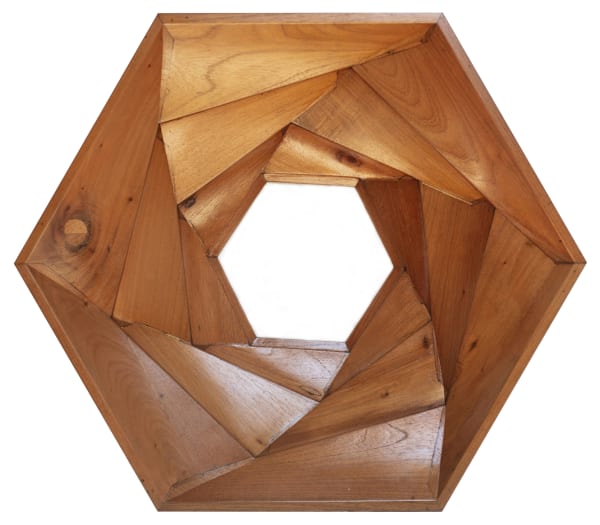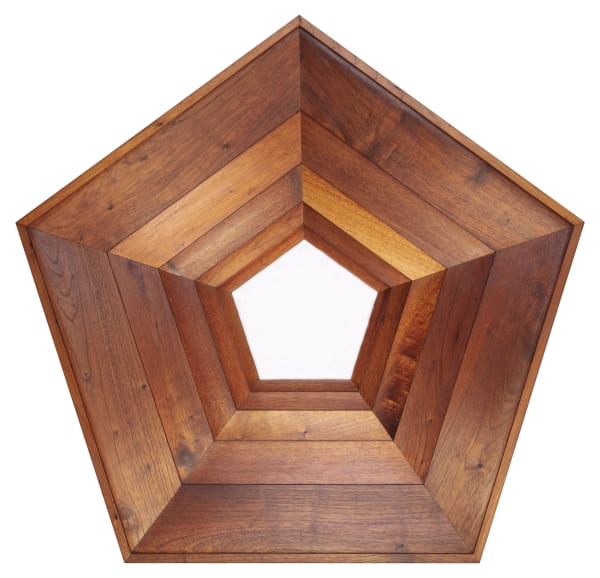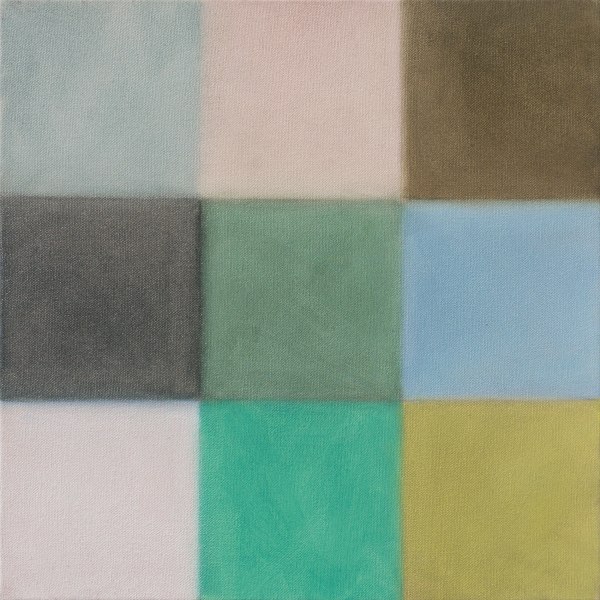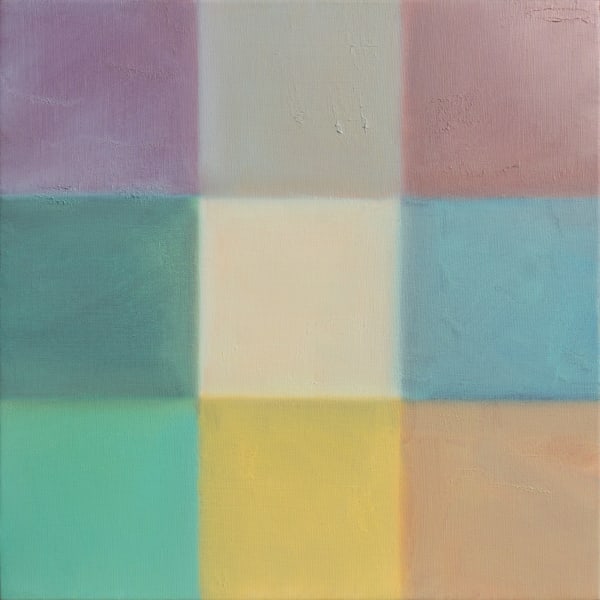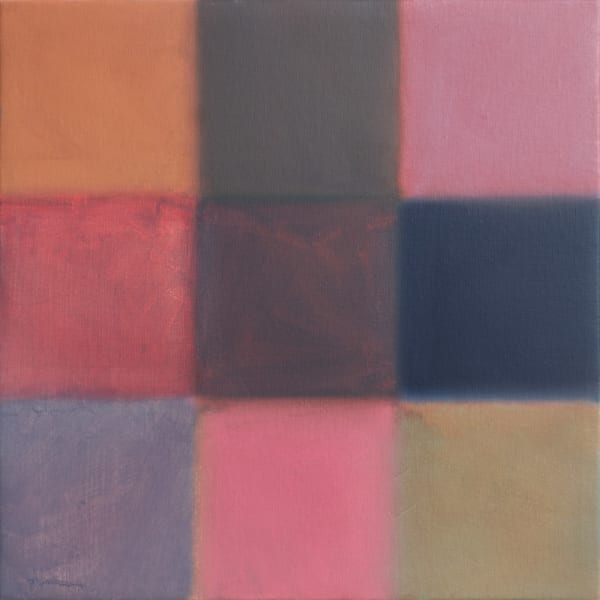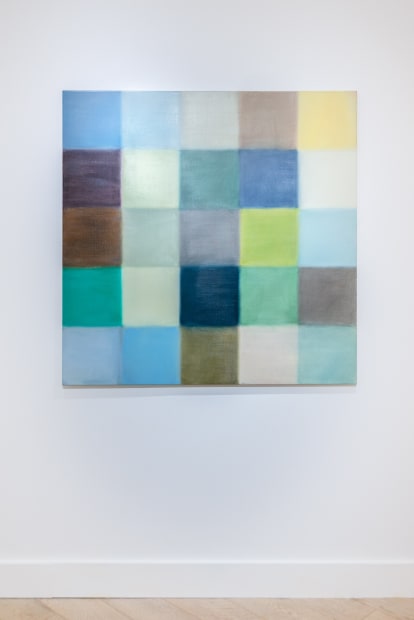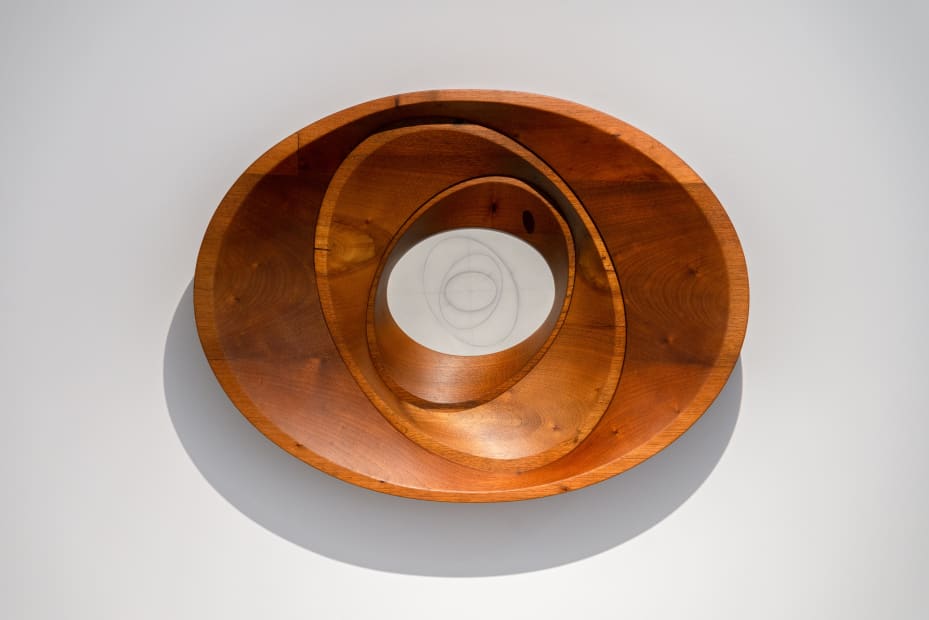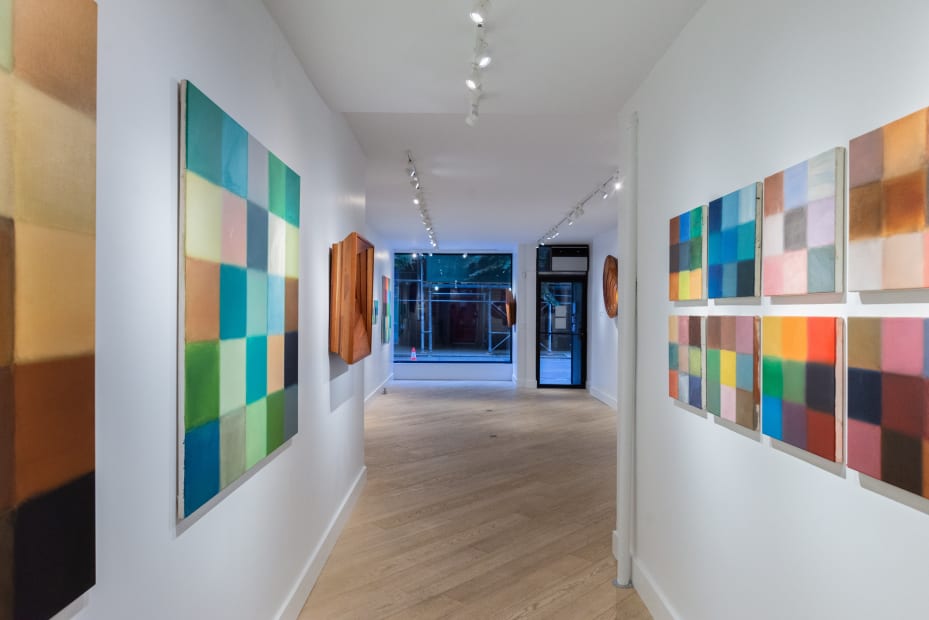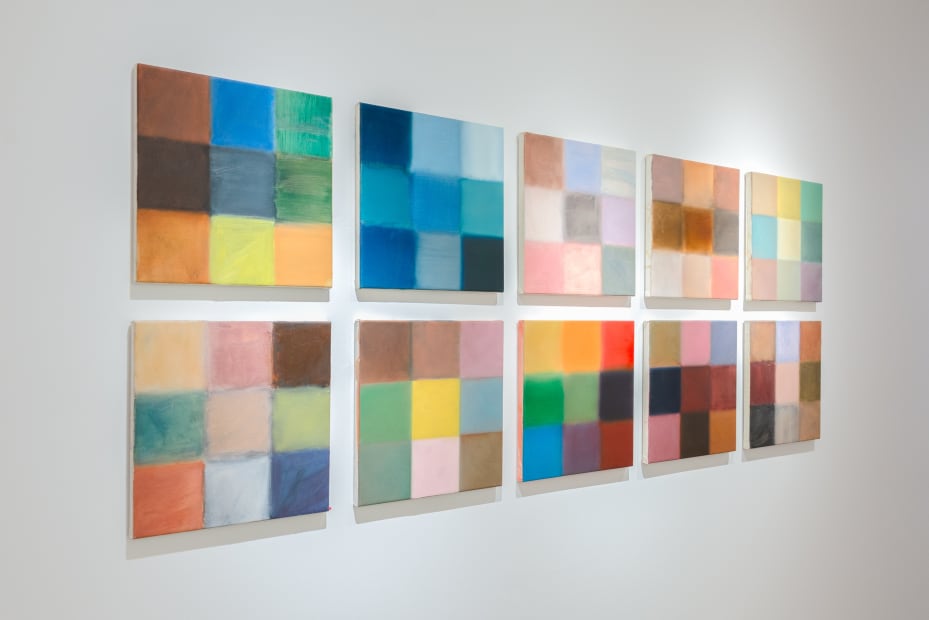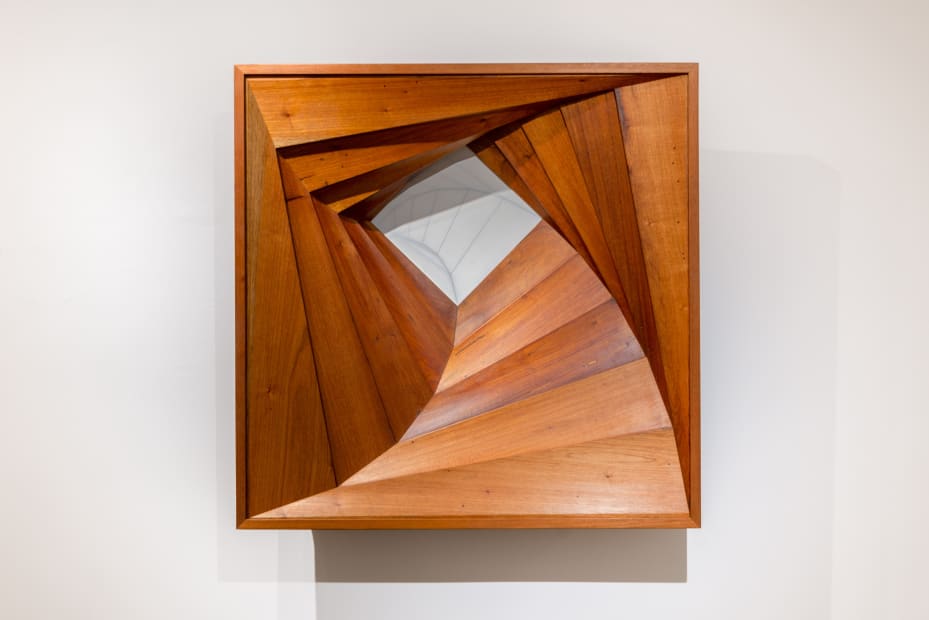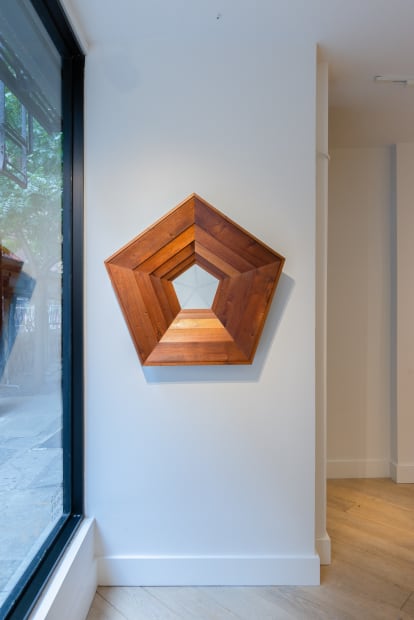Par | ergon: Roger Toledo
Color possesses me. I don't have to pursue it. It will possess me always, I know it. That is the meaning of this happy hour: Color and I are one. I am a painter.Paul Klee
Toledo’s PAR|ERGON brings together two series which bookend the artist’s oeuvre, highlighting how his lifelong fascination with mathematics and color manifests as the structural underpinning for the analytical investigation of his heritage.
Throughout the gallery large canvases from one of Toledo's earliest bodies of work, Days at the Museum, translate paintings of the Cuban avant-garde into the abstract synthesis of their palettes, each expressed in an imbricated patchwork of 25 chromatic fields. Color, the most relative of the media that art employs, according to Albers, has been a constant subject in Toledo's voice. In 2011, in the modern painting rooms of the National Museum of Fine Arts in Havana, he began to work on Days at the Museum, a series that extends throughout his career, and to which he returns repeatedly, like someone who retraces their steps to find themself. The artist comments:
I chose to work on Days at the Museum with pieces that perhaps are not the most recognized within the historiography of Cuban art of the first half of the 20th century. My criteria, I think, was more practical and personal, they are all works of a wide chromatic value, perhaps not so representative of the time, as representative of the spirits of their authors.
His practice can be understood in conversation with the work of Klee, Rothko, the Bauhaus color theorists, among other western art historical references; yet there is in Toledo a vocation to narrate through color interpretation his heritage as a Cuban painter. Works from Wifredo Lam, Jorge Arche, Carlos Enrique, Fidelio Ponce and others, will be the pictorial vocabulary that Toledo makes his own. Challenging the definition of originality in painting, the artist's geometric compositions on canvas relate to a broad spectrum of creative production, including fine art, craft and design. While Toledo's nonconformist attitude aligns with that of the 20th century abstractionists, the artist's work can also be understood in relation to contemporary issues of patrimonial value, cultural reframing and identity.
And it is in this dialogue that Days at the Museum intermingles –in the exhibit– with Parergon, his latest series, where the focus shifts from painting to the frame as an independent work, in seven dynamic object-frames the artist sculpts with skills passed down by his father using reclaimed lumber from Cuban colonial period houses.
We are our memory. That is, memory is the soul.
Umberto Eco
A year after he began working on Days at the Museum, in 2012, Toledo decided to delve into the creative possibilities of the family business, a self-taught woodshop in Camagüey, Cuba, which his father had conceived as the main financial support for his family. The woodshop was supplied, due to constant material limitations, mainly with reclaimed wood from colonial houses undergoing restoration processes. Located in the center of the island, Camagüey was one of the main cities of colonial Cuba, it is not surprising, therefore, the strength of its colonial architectural heritage. With this time-cured wood and the sole idea of making something that would accompany his growing interest in form as an expressive resource, it took years of trial and error for Toledo to find his way to what is now Parergon:
The pieces are digitally designed, then each element that will be part of the final work is cut and carved by hand and assembled in layers on a substrate. The final process, which is the most delicate from the artisan's point of view, is to finish each of the parts of the piece and perfect the carving. All the works have imperfections, which are part of the nature of the material that makes each piece unique.
Toledo's interest in rescuing history is evident in the celebration of the materiality of his sculptural objects. These imperfections in plain sight serve as visual interruptions, deepening dialogues about the artist’s practice and its intersections across time from which he comments on the autonomy of both material culture over history and of the frame over the primacy of painting.
In this exhibit Toledo embraces and pushes the already many-sided definition of parergon in the historical discourse of art. The term does not reference/identify an independent entity, but something secondary or auxiliary, par, to the central subject, ergon. Traditionally, this interconnectedness arises between elements within the pictorial plane or between the work and the frame. Days at the Museum eliminates the ergon of each avant-garde work through its abstracted chromatic compositions, rendering itself parergon to the original painting. Parergon imbues the frame with the technique, aesthetics and concept previously reserved for the work it surrounds, making each frame a work in and of itself. The exhibition engages viewers in a cultural interchange that extends beyond the different paths in Toledo’s work. Days at the Museum could be considered a color-based chronicle of Cuban painting; Parergon, the frame of a history yet to be written. Both embody the artist’s distinctive union of the pictorial with physical matter and cultural trails. Behind the visual dialogue that Toledo’s exhibit contains, there is a look at the Cuban patrimonial footprint, an attempt to rescue and renew the artist's material culture, and therefore his own place in history.
